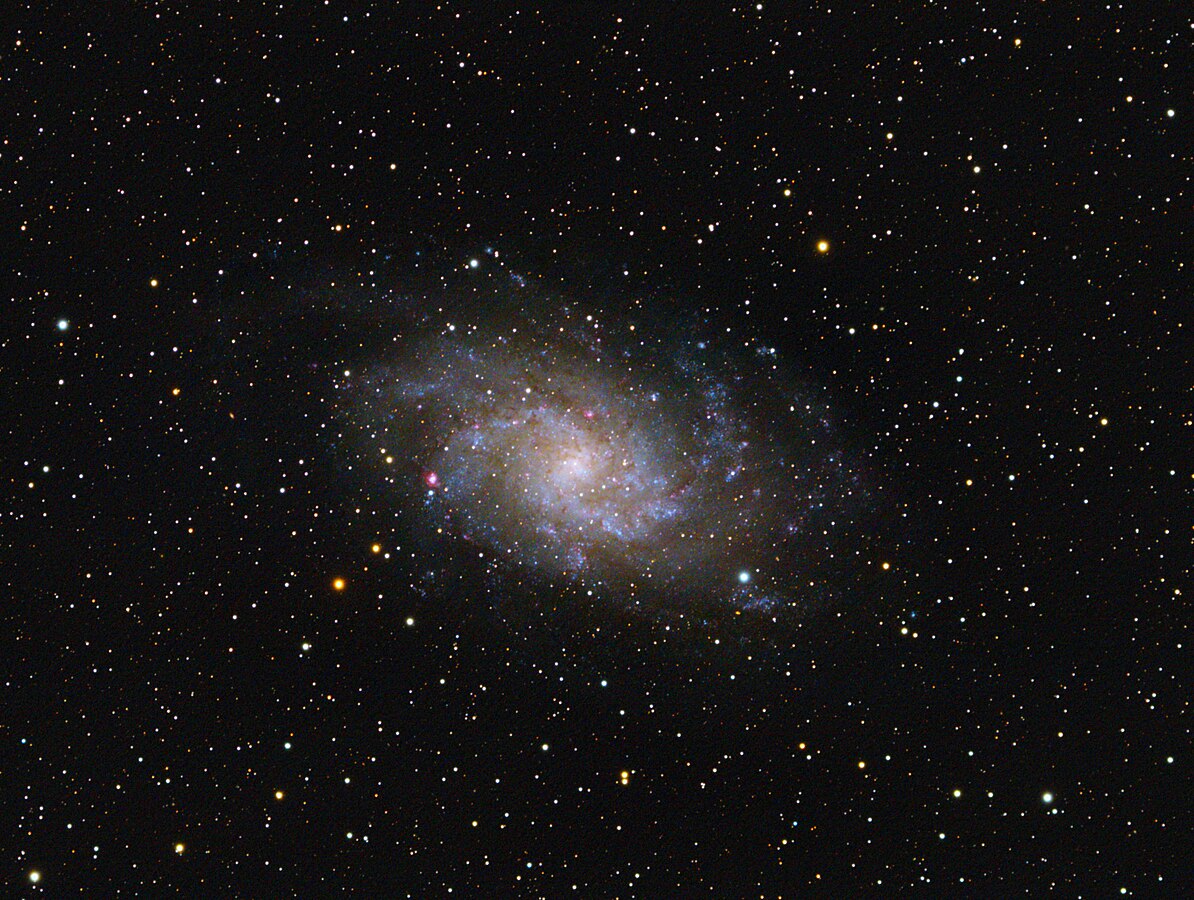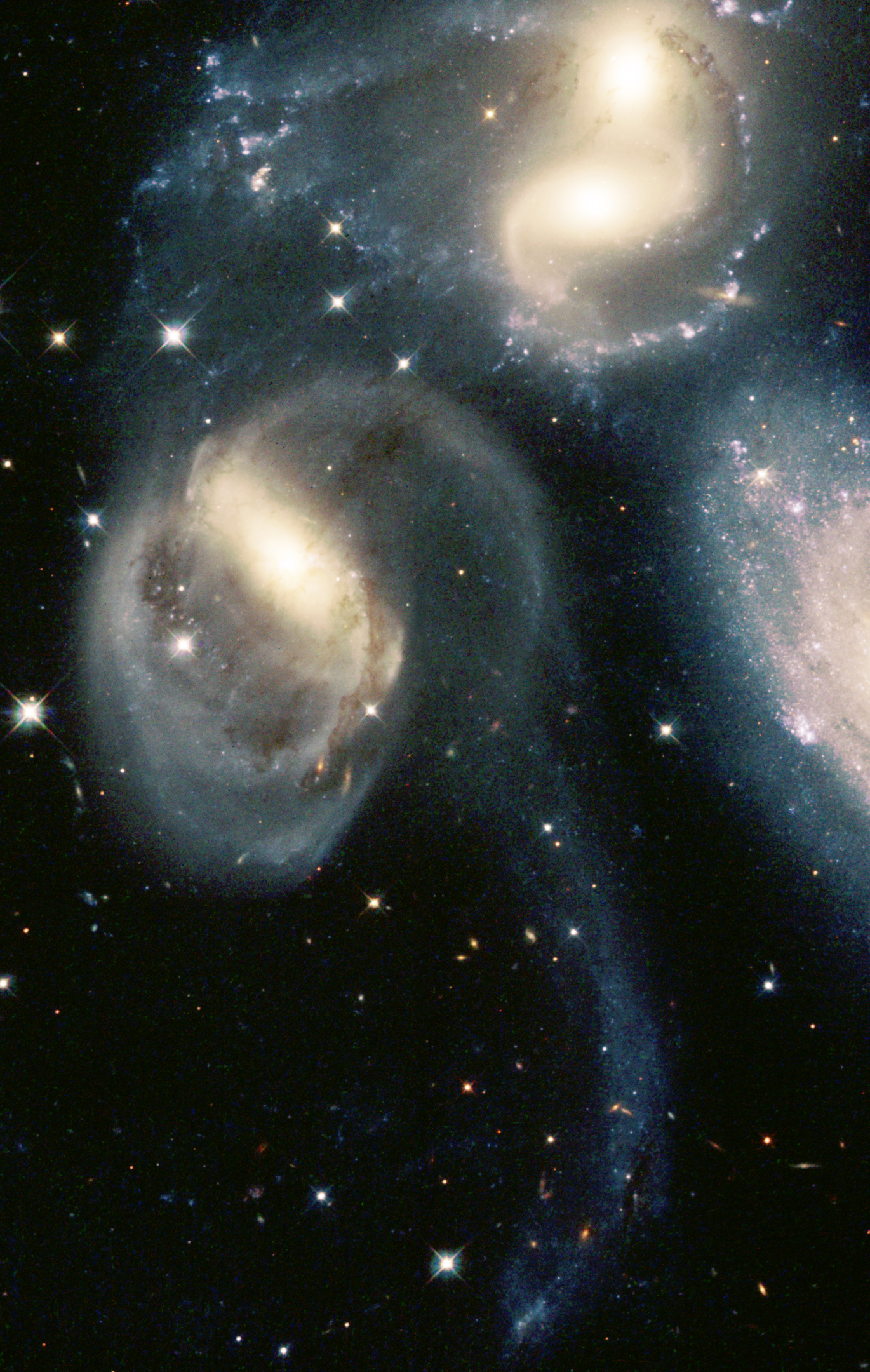Stephan's Quintet. North is to the right. Image Credit: NASA, ESA, Hubble Legacy Archive;
Processing & Copyright: Bernard Miller
Today's APOD is great. It really brings out excellent details in the galaxies of Stephan's Quintet!

1) NGC 7320: This is the foreground galaxy of Stephan's Quintet. We can tell at a glance that this a small, light-weight galaxy. The central region is small and faint, and consists of a mixture of old (yellow) and intermediate (yellow-white, white and bluish) stars. Large galaxies never have centers that are barely brighter than their disks! And unless there is a brilliant starburst at the centers of large galaxies - and even is there is! - they always have a bright yellow central population. As for the central "bulge" of NGC 7320, it is traced with short, fine dust lanes. At the very center is a tiny white spot, the nucleus. The disk is mottled with individual blue stars of, probably, in most cases spectral class B. The disk is of a relatively uniform brightness all over, and the spiral arms don't stand out very strongly against the disk.
2) NGC 7319: This is a barred grand design (two-armed) spiral galaxy with a long, broad, yellow bar. We can tell there is a bar because the arms start far away from the galactic center. The bar blends seamlessly into the large bulge. The center is bright white and spiral-shaped, and it is likely that there is star formation there. Dust is being ejected from the nucleus, possibly because of the black hole there. The arms are contorted by strong tidal forces. There are young stars and some star formation in the arms, particularly in one of the arms, but this is a predominantly yellow galaxy. A long, somewhat faint, blue tidal tail is stretching away from NGC 7319 towards the upper edge of the APOD.
3) NGC 7318 B: This is where most of the action is. NGC 7318 is a yellow spiral galaxy with a pair of short, barely bluish spiral arms, but there is also a long, prominent arc of dust, which is probably the remnant of a long, conspicuous spiral arm. NGC 7318 B is colliding with elliptical galaxy NGC 7318 A. Titanic forces of the collision have flung huge amounts of gas out of NGC 7318 B, and this gas has coalesced into large numbers of huge blue star clusters.
NGC 7317: This is an innocent-looking elliptical galaxy which appears to be unaffected by train wreck of the other galaxies. There is a small elongated object next to NGC 7317 whose redshift is the same as the redshift of NGC 7317, so this may be a tiny satellite of NGC 7317.
I would guess that NGC 7320, the foreground galaxy of Stephan's Quintet, is about the same size and mass as M33. The central regions and nuclei are similar. But the disk and arms of M33 are much "busier" than the disk and arms of NGC 7320.
Ann
 Stephan's Quintet
Stephan's Quintet



